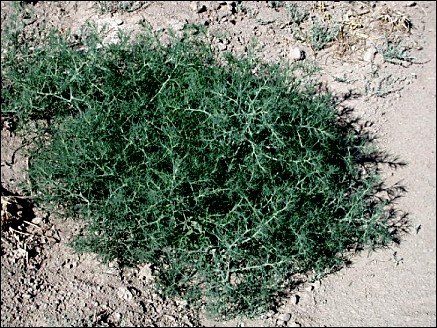

Characterized by some as the world's largest environmental problem, successful invasion by foreign plants and animals has never been explained to everyone's entire satisfaction. A leading candidate has been the "enemy release hypothesis", a fancy way of saying that invading plants and animals may face fewer or less efficient enemies in a new land. Now, a couple of recent studies add more strength to the idea, not by looking more closely at surrounding enemies, but by looking within.
We sometimes forget that most kinds of plants and
animals carry a heavy load of internal parasites. These recent
studies show that naturalized weeds and environmentally harmful
animals have fewer kinds of parasites within their naturalized
range than in their homelands. This was true for the group of 473
plant species studied, but interestingly enough, those plants
classified as weeds posing a high risk to agriculture or as
invaders of natural areas displayed lighter parasite loads than
the others. Maybe, as invaders of our desert slowly accumulate
our native viruses, fungi, and worms, liberation may yet be at
hand.

Contributor: Arthur H. Harris, Laboratory for Environmental Biology, Centennial Museum, University of Texas at El Paso.
Desert Diary is a joint production of the Centennial Museum and KTEP National Public Radio at the University of Texas at El Paso.

A young tumbleweed, a classic case of an invader who has done well. Photograph by A.H. Harris.
Clay, K. 2003. Parasites lost. Nature, 421:585-586.
Mitchell, C. E., and A. G. Power. 2003. Release of invasive plants from fungal and viral pathogens. Nature, 421:625-627.
Torchin, M. E., K. D. Lafferty, A. P. Dobson, V. J. McKenzie, and A. M. Kuris. 2003. Introduced species and their missing parasites. Nature, 421:628-630.